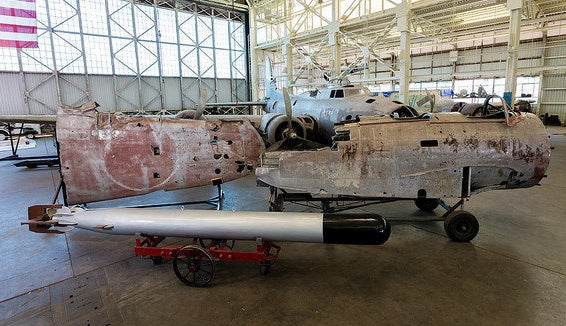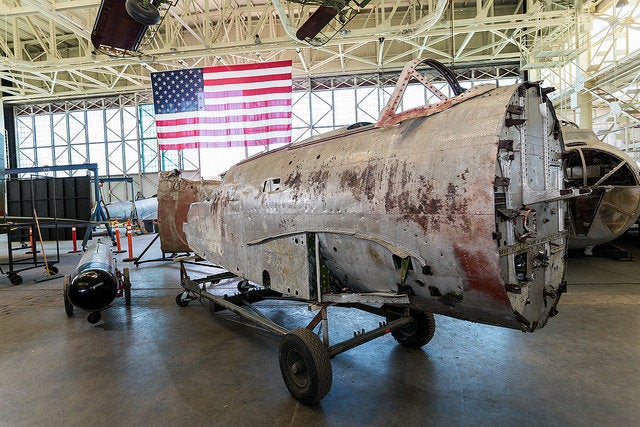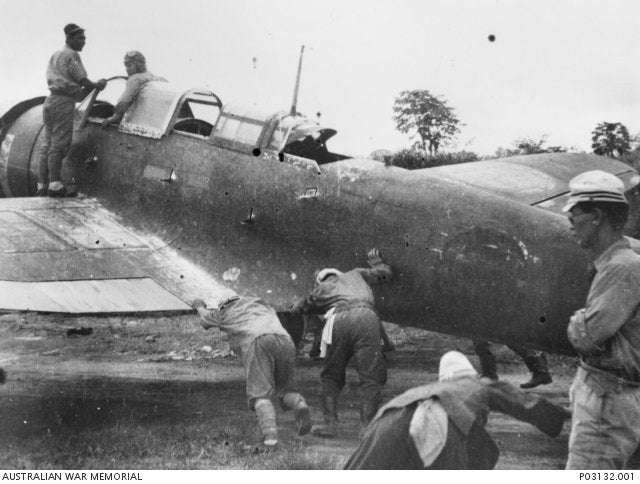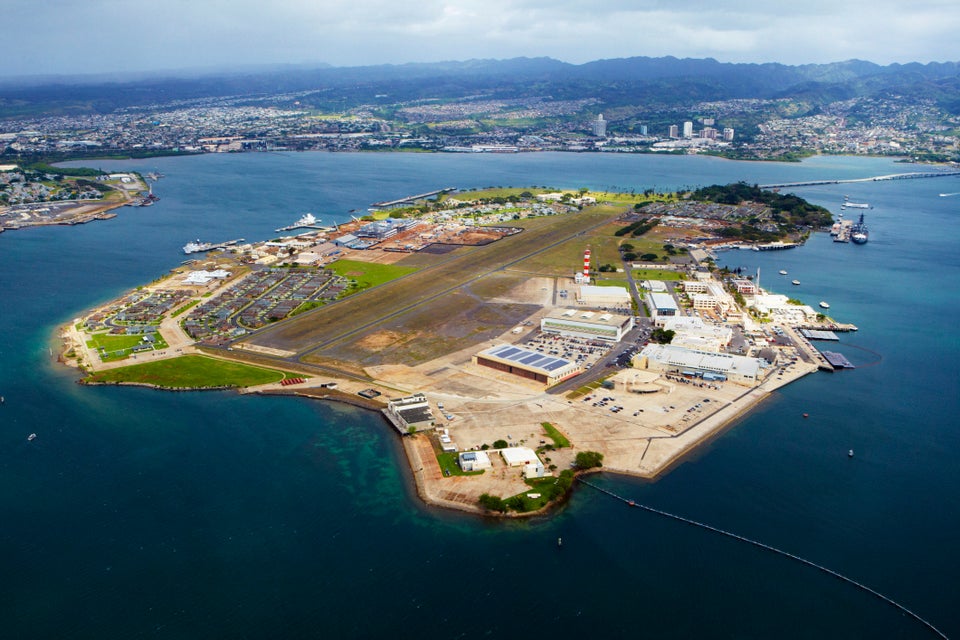Of the three types of Japanese aircraft that descended on Pearl Harbor on the morning of Dec. 7, 1941, the Nakajima B5N bomber was by far the most destructive, becoming one of the most feared and deadly weapons of World War II.

Nicknamed "Kate" by U.S. allied forces, there were 1,149 B5N bombers in circulation during the war. Today, however, there are only two known survivors, both wreckages, and not a single intact Kate remains.
With the 75th anniversary of the Pearl Harbor attack approaching later this year, however, Hawaii's Pacific Aviation Museum Pearl Harbor has unveiled the wreckage of one of the infamous Kates as part of its permanent collection.
"This one is truly a one-of a kind," Kenneth DeHoff, the museum’s executive director of operations, told The Huffington Post. "You can see the rising sun red ball [from the Japanese flag] on the wing; the paint is still there."

While many Nakajima B5Ns were used in the attack on Pearl Harbor, this particular aircraft was built one year later in 1942 and was therefore not involved, DeHoff said.
The Kate is already on public display (next to the much-revered "Swamp Ghost") and the museum has begun work to bring her back to life, beginning a restoration process predicted to take five years and cost $1 million. When completed, the plane will be the only restored Kate in the world.
"This will be a very complete restoration, right down to the point where if you put fluids in it, we'd be able to crank the thing up and fly it," DeHoff added.

The museum declined to specify how they acquired the plane, though they insist it was done in a legal manner. (In the past, governments including Papua New Guinea have accused salvagers of illegally removing planes from their countries.)
Justin Taylan, director of Pacific Wrecks, a nonprofit history site, says he has studied and documented the history of the plane by following records of the identification number the plane flew under, 302. He believes this specific plane took its final flight in 1945 and was based at Rabaul, a Japanese stronghold at the tip of New Britain Island, in Papua New Guinea.
Taylan’s research also shows that The Pacific Aviation Museum acquired the plane sometime after 2010. In its 2011 and 2012 annual reports, the museum lists the plane as being in storage in New Zealand.

While we might never know the true history of this particular bomber -- the museum will neither confirm nor deny Taylan's account -- the museum's restoration will provide an important missing piece to the World War II, and especially the Pearl Harbor, puzzle.
The Pacific Aviation Museum, after all, is located on Ford Island, smack dab in the middle of Pearl Harbor. To see the aircraft standing on the exact spot where it once caused so much damage "is really a once-in-a-lifetime experience," DeHoff says. "You really get a sense of being there."

